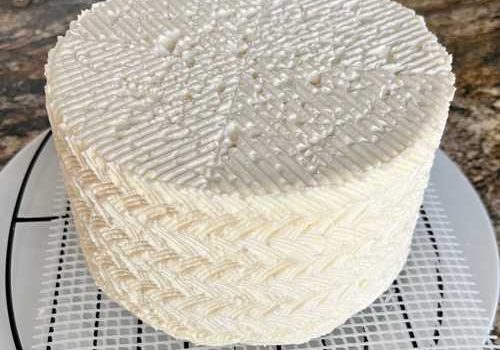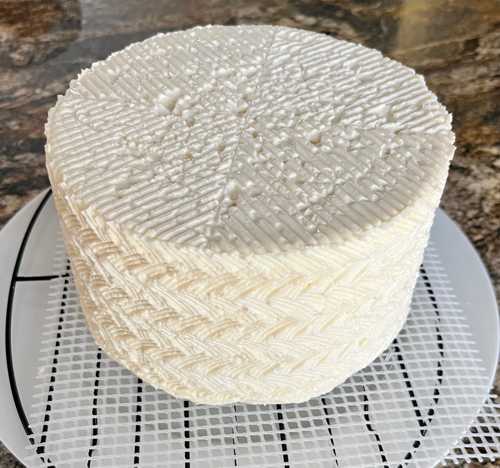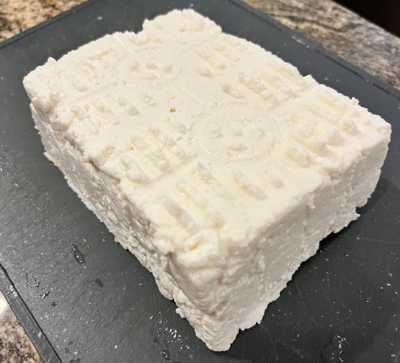
On our homestead the livestock here all have jobs. When we decided to get Nubian goats they definitely were added because of their milking capability. We wanted to keep products that were easier to digest and goat milk was one of those items. It also allowed us to have the control of what the goat was eating and taking into its body, and then in turn into ours.
Cheese became a huge learning curve, or at least I thought it would be. As time progressed I realized the learning curve was just like anything else. In the beginning … yes, it seems overwhelming, but in reality if you took things step-by-step and mastered that item, the overwhelm disappears.
So eagerly the aspect of soft goat cheeses began, cottage cheese, yoghurt, then harder cheeses, then aged cheeses to the many dairy items you require in your home. Can you make all dairy items with Nubian goats … no, as they do not generate enough cream, eg. to make sour cream and butter. However, you can save the cream from the top layer of the milk and use it in a recipe requiring cream if you choose. (I have made butter by saving the cream, however, for me I find it easier to save the cream to use as a whipped cream instead).
So what would be my suggestion to you if you are thinking about starting down the cheesemaking avenue? Start with a cheesemaking recipe for beginners and go from there!
What many of us do not realize in the beginning is how much milk is needed to actually make cheese. Then from there, what can be made from the whey (a by-product) of making cheese. Remember the nursery rhyme about little ‘Miss Muffet eating her curds and whey’. I admit until I was an adult and entered cheesemaking I did not realize what she was eating, aka – cottage cheese.

That brings me to this blog post. As I stated many do not realize how much milk is needed. Many of the hard cheeses are made with at least 8 litres of milk. So much depends on the actual mold size you have available to hold the product. For our homestead I have bought molds to work for our lifestyle and storage means. Here is an example of a goat cheddar cheese I have made that uses 8 litres of milk. When pressed and ready to dry you can see it is a bit over 4” in height and is 6 ½” in diameter. From making the cheese you will also have the whey left over that you can make ricotta cheese from. The ricotta cheese is about the size of a pound of butter. So definitely a worthwhile endeavour! However, the time required to make the cheese is a good part of your day and attention to the details is important. The salting and drying process of the cheese goes on for a few days before it begins into its aging process. So notes of your processes are a great addition for repeating your successes and failures.

How many litres of milk do I get a day from 2 goats? Well that depends on where they are in their milking cycle. In the early months after the kids are born I will get up to 4 1/2 litres a day (the rest of their milk goes to the kids), however, as their milking cycle comes to a close for the year this drops to 1½ litres a day. So planning is definitely key!
Like anything to be successful on a homestead you have to plan. You want to plan when you are overflowing in milk to make the cheeses that require more milk and store them away for the leaner times. However, in my area of the world that means that I am overflowing with milk as the garden work is all starting to take off, so lots of work is required there too. Juggling can be a bit of an understatement. Your time and energy where best spent has to be figured into the plans. As time goes on throughout the year and the milk supply starts to decrease you have to plan there too as you might have to save milk from a number of days to make a cheese.
As a whole to me, it is absolutely worth the time and energy, however, now that we are numerous years into the process I have made many varieties of cheese and dairy products and I can’t imagine my life without the goat milk.
So my advice start with a simple recipe for beginners (or maybe two). Master those before moving onto another type. Then in no time you will have the confidence to continue with ease.
For me my grandkids make it all worth it when they ask for goat cheese and say “this is SO good Nan!”
